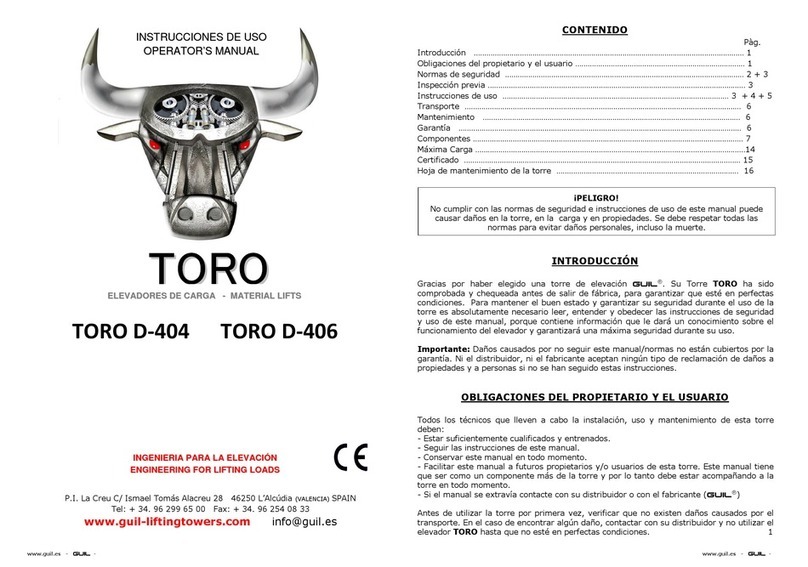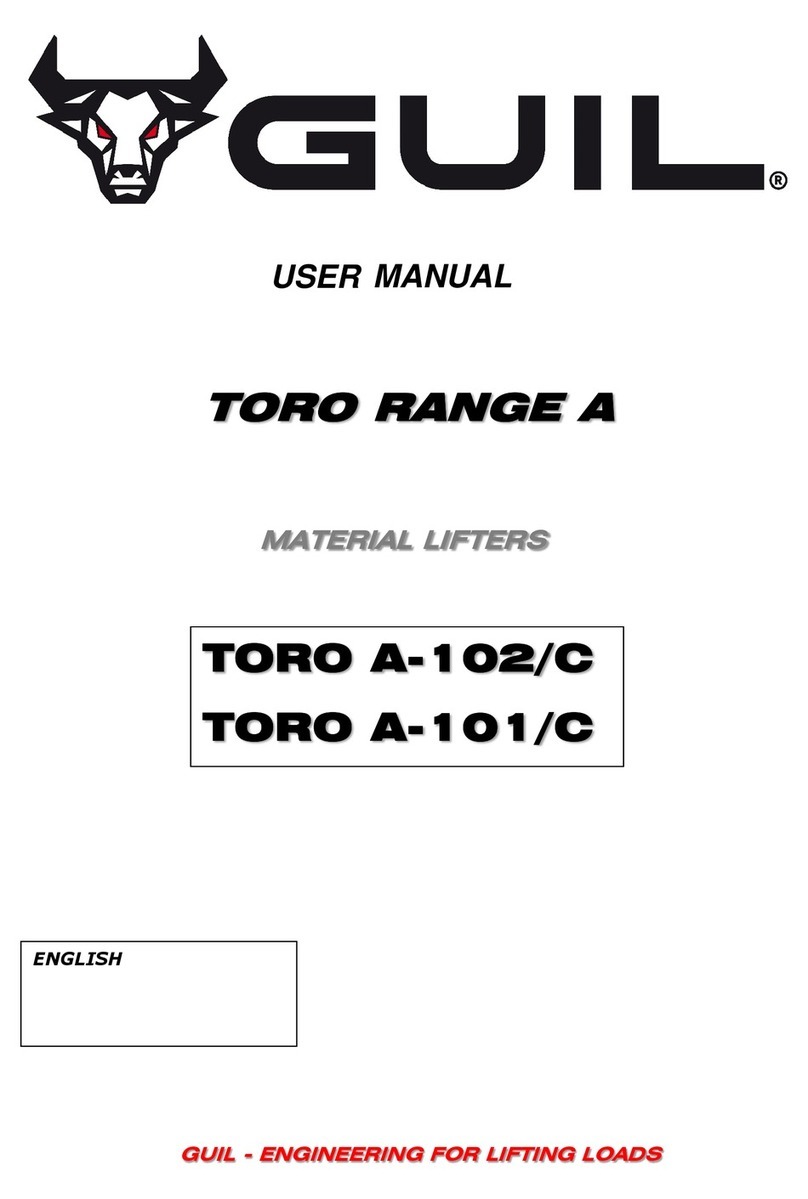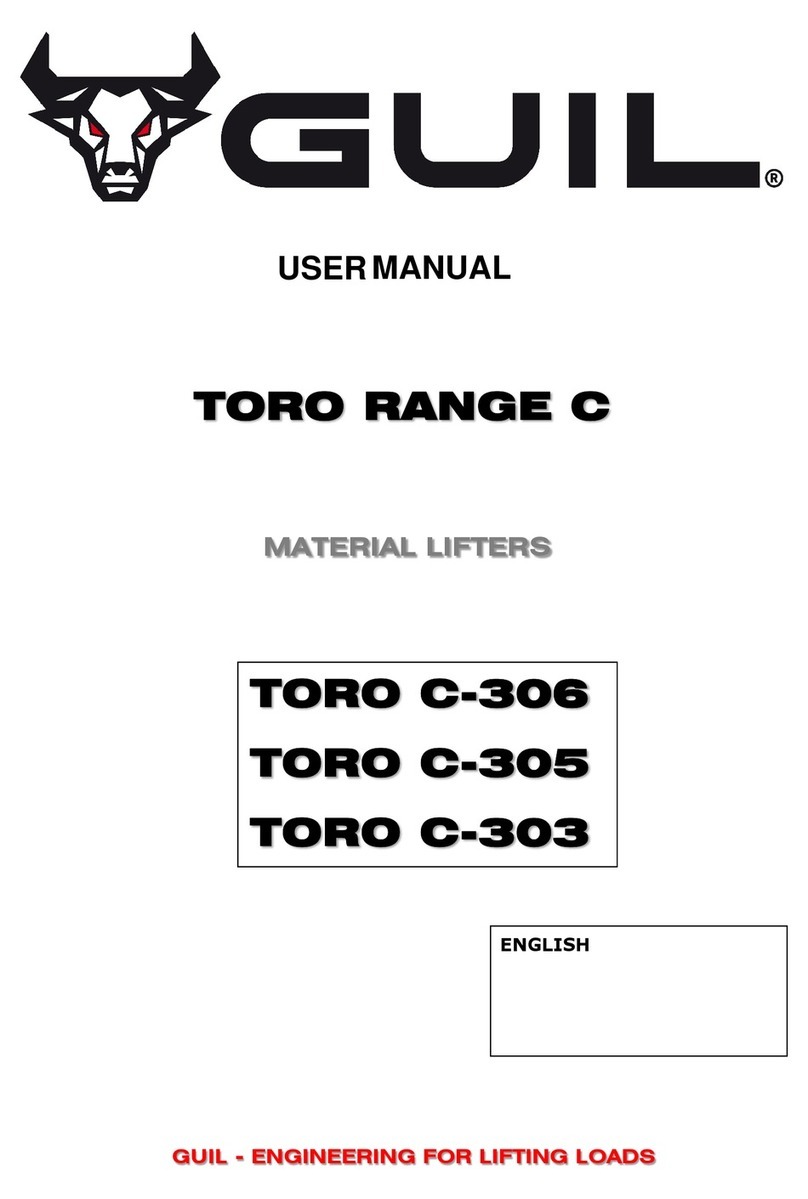
GUIL - TORO lifters
19
www.guil-lifters.com - GUIL
-
INDEX
INTRODUCTION .......................................................................................................................................................... 19
OWNER AND USER’S OBLIGATIONS ............................................................................................................................ 20
SAFETY RECOMMENDATIONS .................................................................................................................................... 20
SET-UP AND WORKING AREA SAFETY ............................................................................................................ 20
LIFTER USE SAFETY INSTRUCTIONS ................................................................................................................ 21
PRE-OPERATION INSPECTION ..................................................................................................................................... 22
OPERATING INSTRUCTIONS ........................................................................................................................................ 22
SET-UP ............................................................................................................................................................ 22
A.- INSTALLATION WITH FRONT STABILISER LEGS ............................................................................ 23
B.- INSTALLATION WITH BACK STABILISER LEGS ............................................................................... 25
REVERSING THE FORKS .................................................................................................................................. 27
FUNCTION TEST ............................................................................................................................................. 27
MOVING THE LIFTER TO THE WORK AREA .................................................................................................... 2
RAISING THE LOAD ......................................................................................................................................... 2
LOWERING THE LOAD .................................................................................................................................... 29
BLOCKING THE LOAD/SAFETY SYSTEMS ........................................................................................................ 29
AFTER EACH USE ......................................................................................................................................................... 29
TRANSPORT ................................................................................................................................................................ 30
MAINTENANCE ........................................................................................................................................................... 30
RISK ASSESMENT ........................................................................................................................................................ 31
GUARANTEE ................................................................................................................................................................ 35
* ANNEX A: ELECTRIC LIFTING SYSTEM
* ANNEX B: LOAD CHART, DRAWINGS AND CERTIFICATES
INTRODUCTION
Thank you for having chosen a GUIL® material lifter. Your TORO machine has been examined and checked
before leaving our premises to ensure it is in absolutely perfect condition. To maintain this condition and to
ensure a safe use, it is absolutely necessary for the user to read, understand and obey the safety and operating
instructions in this manual as it contains information that will give you a thorough knowledge of the workings of
your TORO lifter and guarantee maximum safety whilst operating it.
TORO lifters are manufactured using high quality components to guarantee maximum durability and safety
during its use.
Damages caused by the disregard of this user manual are not subject to warranty; neither the dealer nor the
manufacturer accepts liability for any resulting damages to property or personal injury.
WARNING!
Failure to comply with the safety or operating instructions in this manual may result in damage to the tower,
the lifted load, personal injury or even death! The instructions laid out in this manual must be followed at all
times.






























